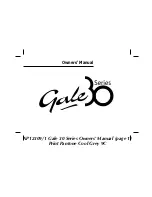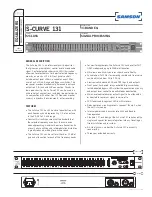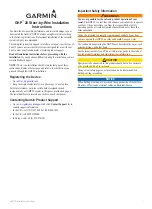
3. Installation
To install a DSP-9+ in a station, an operator must provide power to the DSP-9+, make audio
input and output connections to the DSP-9+, and make Push-To-Talk (PTT) connections to the
DSP-9+. A typical DSP-9+ installation is shown below in Figure 3.1.
Receiver/Transceiver
Speaker Output
Station Power Supply
13.8 Vdc
12-16 Vdc
Audio
Input
DSP-9+
Speaker
Speaker
Output
Multimode
Line
Output
Controller
PTT Input
PTT Output
Figure 3.1
Power Supply
The DSP-9+ requires a power source of 12 to 16 Volts dc. at 1.0 Amperes. The center pin of
the power connector is POSITIVE (+).
Acceptable power sources include:
13.8 volt dc. regulated external transceiver power supply (recommended power source for the
DSP-9+ because it is better regulated than most plug-in wall outlet supplies). Note that some
transceivers with internal power supplies have accessory power jacks with insufficient
current output to drive the DSP-9+. Do not use these internal supplies!
Radio Shack 273-1653 12 V.d.c. @ 1 Ampere plug-in wall supply (use the green-tipped adapter
supplied with the Radio Shack unit).
Switching power supplies are generally not recommended.
Connecting Cables
Shielded coaxial cables with RCA phono connectors should be used to minimize the possibility
of RF interference to the DSP-9+. Timewave recommends coaxial video cables with metal
adapters to match the connectors on transceivers and speakers. The center pin on the DSP-9+
audio input connector must not be connected to the transceiver speaker ground. Check
the connections carefully - this is one of the most common problems in DSP-9+
installations!
Audio Input
The audio input of the DSP-9+ is an RCA phono connector on the rear panel of the DSP-9+.
Matching the output level of the radio to the input level of the DSP-9+ is necessary to take
maximum advantage of the wide dynamic range of the DSP-9+. The best way to make these
levels match is to use an adjustable audio output of the radio (typically the speaker output) as the
input to the DSP-9+. After connecting the DSP-9+ to the radio, follow this simple procedure to
Summary of Contents for DSP-9+
Page 1: ...DSP 9 Audio Noise Reduction Filter Operating Manual Version 3 0A Timewave Technology Inc ...
Page 5: ......
Page 15: ......
Page 19: ......
Page 20: ......






































